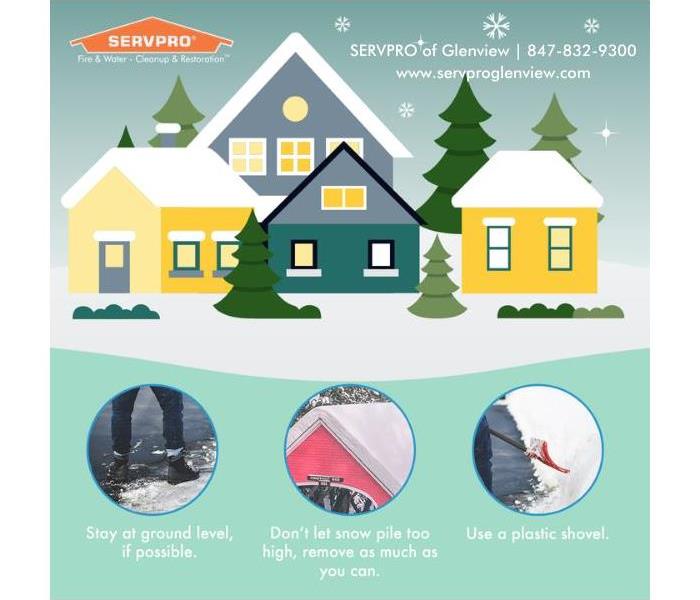3 Quick Safety Tips When Dealing With Snow and Ice
12/21/2020 (Permalink)
Winter storms bring their own set of dangers for homeowners. If your area gets a significant amount of snow, there are steps you should take to prevent damage to your property, be it residential or commercial.
A significant snowfall will accumulate on the ground as well as on physical structures, such as your house, garage, shed, office, and so on. Your task will be to clear the snow, keep access to the property clear of snow, and to do so safely.
Your first priority will be to clear the snow on the ground to provide clear access to your home's entry points, such as the walkway to your front door and the driveway or street leading to your parking area or garage.
Take a moment to look up! See how much snow is on your roof and determine the safest way to clear it. Don't let snow pile too high, as excessive snow can cause structural damage from the weight of the snow, in addition to potential water damage caused by ice dams in gutters or roof crevices, or from melting snow penetrating into the interior spaces, such as your attic.
Your safety should be your number one concern when clearing snow from your property! Here are the top three tips you should remember:
- Stay at ground level, if possible. This is the safest place for you to be. Ladders can become unstable on slippery, icy surfaces.
- Don't let snow pile too high, whether that's on the ground or on your roof or other overhead structures. Remove as much as you safely can.
- Use a plastic shovel, as metal shovels (or metal edges on shovels) can cause damage to your shingles, gutters, and siding. Better yet, use a roof snow rake - a tool meant to remove snow from roofs while the user stands safely on the ground.
If you cannot safely remove the accumulated snow from your property, be it snow on the ground or on your structure, call in a service to take care of it for you. Snow removal companies have the tools and manpower to safely clear the snow that has the potential to cause damage to your property, home, or business.
Snow left on the ground or roofs can go through several melt-freeze cycles, which creates a far more treacherous situation, as the underlying snow becomes compacted or turns into a thick sheet of ice. The dangers of this situation are numerous: snow and ice can cause people or animals to slip and fall on the ground; delivery persons can have difficulty accessing entry with packages or mail; snow or ice overhead can slide off, possibly onto and hurting persons below.





 24/7 Emergency Service
24/7 Emergency Service
